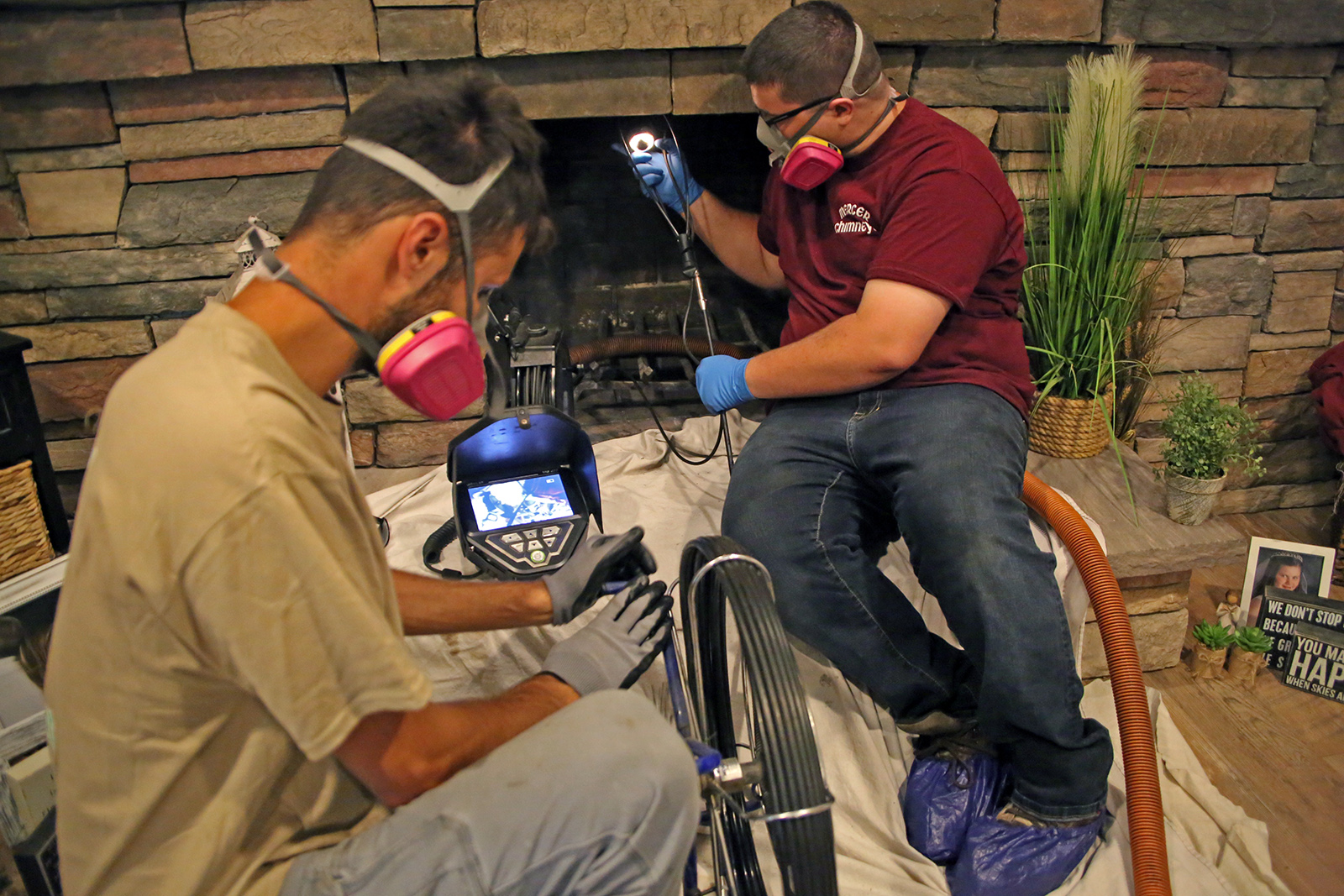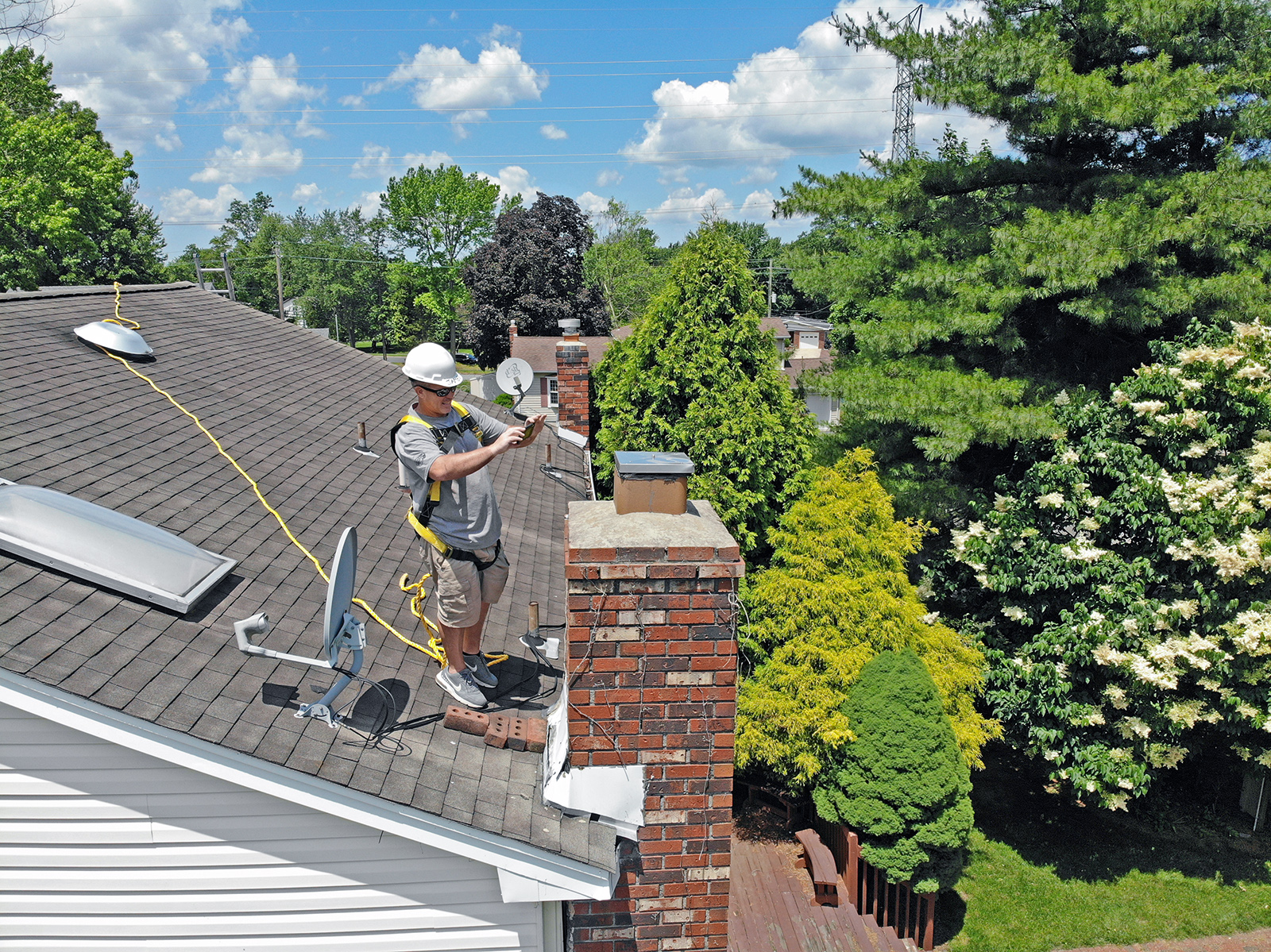Why Your Chimney Needs a Video Scan
Annual chimney inspections ensure that the chimney is keeping your home and family safe even when you’re not using the fireplace or heating stove. However, many types of damages are difficult to spot with the naked eye, and a regular inspection may not detect all the deterioration and damage that may be developing inside the chimney. That’s why you should ask your chimney sweep to perform a level 2 chimney inspection, which includes a video scan of the internal chimney system.

Levels of Chimney Inspection
Qualified chimney professionals follow industry-standard guidelines issued by the National Fire Protection Agency (NFPA) Rule 211, for the three levels of inspection contained in the Standards Codes Chimneys, Fireplaces, Vents, and Solid Fuel-Burning Appliances.
A level 1 inspection is a basic chimney inspection when there haven’t been any changes to the chimney system or heating appliance since the last inspection. It is a visual examination of the accessible portions of the chimney. A more advanced level 2 inspection includes everything in a level one inspection, plus a video scan. It is required when there has been a change or modification to the fuel, chimney or heating appliance, a chimney fire, or other types of damage. It is also required before the transfer of the property. It is a good safety practice to have a video scan if the chimney has not been regularly inspected or cleaned. A level 3 inspection is indicated when there is reason to believe that a serious problem or hazard exists. The chimney technician will need to remove certain components to examine the inaccessible portions of the chimney to locate the source of the issue.
How it Works
The interior of a chimney can be a dark and dusty environment. During a video scan, a trained chimney sweep will use a pole-mounted video camera to scan the interior of the flue from top to bottom. The high-resolution scan will allow technicians to spot warping, cracking, fire damage, and other deficiencies that may otherwise go unnoticed. It’s a specialized tool that can better evaluate the condition of the flue and other interior components. Often the chimney sweep can spot minor problems, such as hairline cracks in a clay tile liner before they develop into a safety issue or more expensive repairs. The technician will review the resulting video images on a video screen with the homeowner. In many cases, this is the first time that the homeowner has seen the inside of the flue. The homeowner will be able to see its exact condition and any repairs that may be necessary.
 Chimney Scan Benefits
Chimney Scan Benefits
A chimney video scan can help spot numerous deficiencies, including:
Masonry cracks:
It can help detect tiny surface cracks before significant masonry damage occurs.
Flue liner damage:
It can see tiny cracks that need repair and prolong the life of the flue liner.
Water leaks:
When there are signs of a water leak, a video scan is an essential tool in helping locate the source.
Rusting or corroding damper:
A video scan can spot the beginning stages of rust and corrosion.
Video scans are probably the best way to evaluate the interior condition of your chimney and flue. We recommend homeowners ask their chimney sweep to include a video scan with their next chimney inspection.



